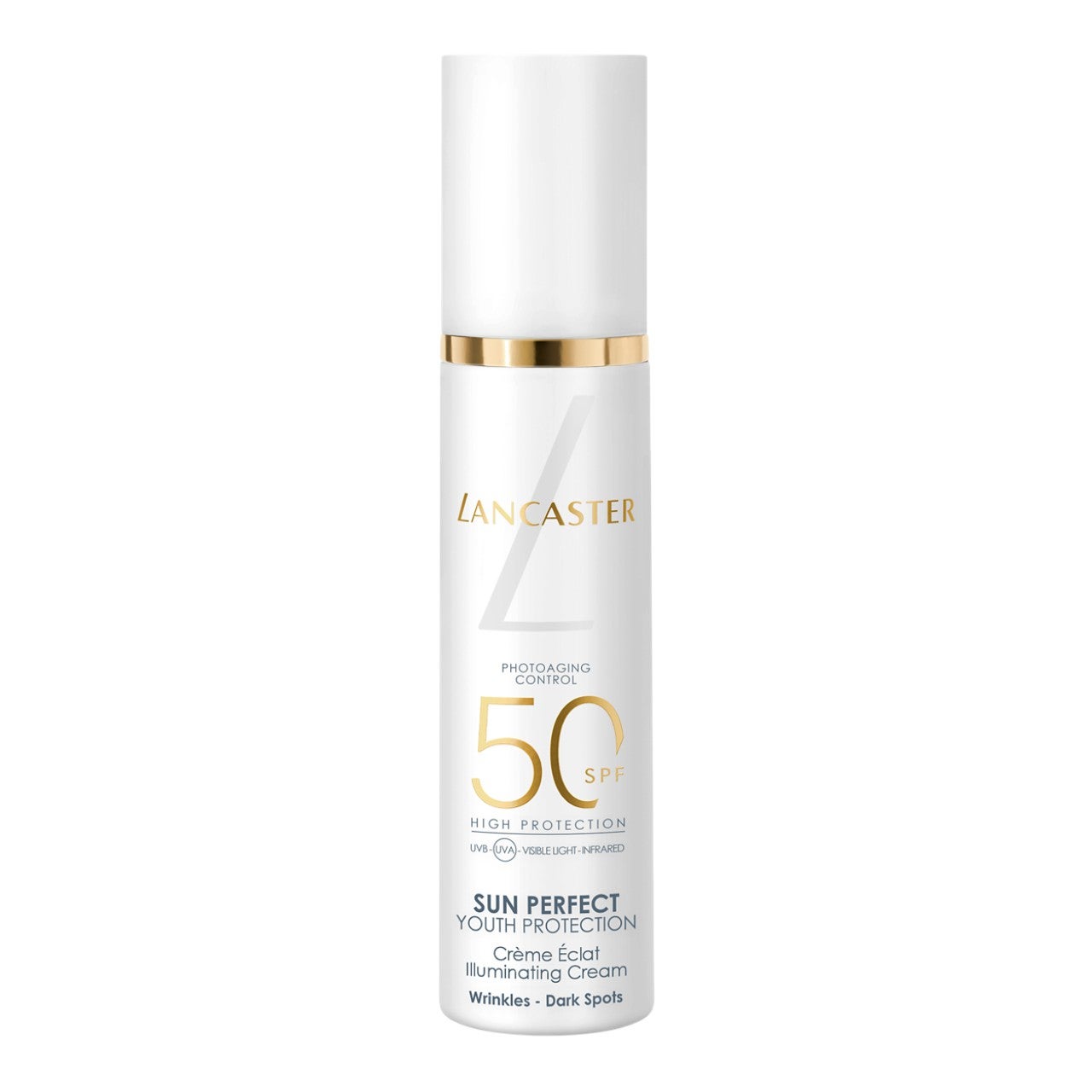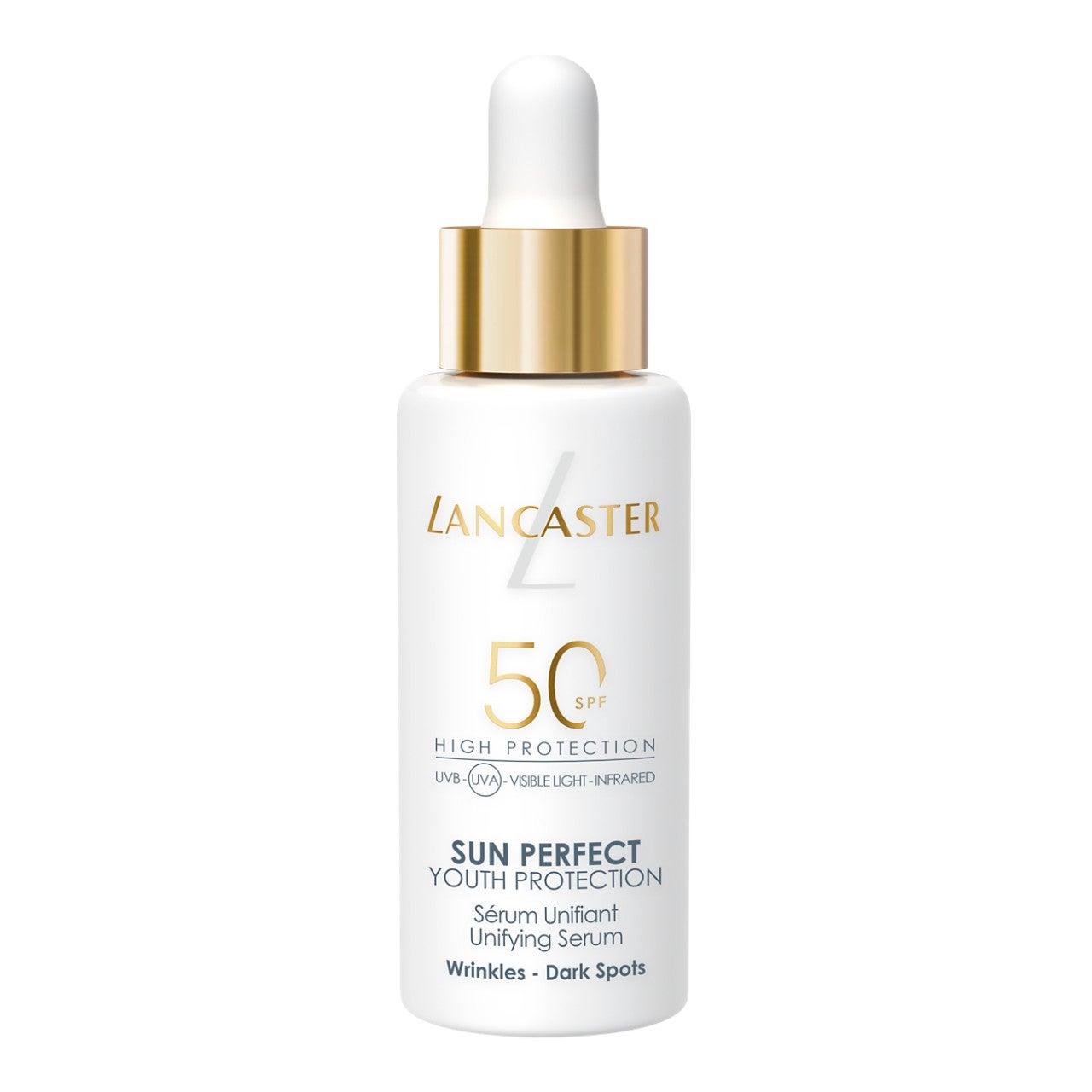An Expert Answers 16 Of Your Burning Sunscreen Questions
Sunscreen is no longer just a beach bag essential — it’s a year-round skincare staple. And while it was once the domain of dermatologists and skincare devotees, daily sun protection is now a non-negotiable for anyone serious about shielding their skin from UV damage, which contributes to premature ageing and, more critically, skin cancer.
If you're SPF savvy, you likely know your factor 30 from your factor 50, but sun protection still comes with plenty of unanswered questions. That’s why we turned to Lancaster — a suncare brand that goes beyond protection to focus on repair — and asked one of their top experts to tackle the most common SPF concerns.
AdvertisementADVERTISEMENT
Without further ado, here’s how to better care for your skin this summer and beyond.
What does SPF actually mean?
SPF, or sun protection factor, is a measure of how well a sunscreen protects the skin from UVB rays — the primary cause of sunburn, says Dr Florence Nadal, Director of Scientific Communications for Lancaster Monaco. There are four levels of photoprotection: Low (typically SPF 6 to 10), medium (SPF 15 to 25), high (SPF 30 to 50) and very high (SPF 50+). Most dermatologists recommend opting for the highest protection regardless of your skin tone or the intensity of the sun. Try the Lancaster Sun Perfect Illuminating Cream SPF50, which boasts ultra-broad spectrum protection against damaging UVA, UVB, infrared and visible light.
What does “broad spectrum” really signify?
You’ve probably heard dermatologists wax lyrical about “broad-spectrum” protection, but what does it really mean? “Broad spectrum refers to shielding the skin from the full spectrum of sun damage,” says Dr Nadal, including UVB, UVA, visible light and infrared rays, which can all damage the skin. Broad-spectrum is typically indicated by the UVA and UVB symbols in circles on product packaging. Lancaster’s Sun Perfect Unifying Serum SPF 50 is a perfect example. It not only provides broad-spectrum sun protection but also shields against dulling, pore-clogging pollution with antioxidant vitamin C — a double benefit.
What's the difference between UVA, UVB and infrared light?
The acronyms on sunscreen labels can be confusing, but they each refer to different types of rays with distinct effects on the skin.
AdvertisementADVERTISEMENT
Dr Nadal explains that UVA rays penetrate deep into the skin, damaging cells and depleting collagen and elastin — the proteins responsible for keeping skin firm and supple. Overexposure can lead to wrinkles, fine lines, pigmentation, skin sagging and even skin cancer.
Dr Nadal says that UVB rays affect the skin’s outermost layer, causing sunburn and surface damage. Infrared rays, which create that hot sensation on your skin, penetrate even deeper, adding to further damage. This highlights the need for broad-spectrum sun protection.
How big is the difference between SPF 30 vs SPF 50?
SPF 30 blocks around 97% of UVB — the rays responsible for sunburn — while SPF 50 blocks about 98%, explains Dr Nadal, meaning the difference in UVB protection is only about 1%. The difference may seem small, but if you have pale skin or spend extended time in the sun, opting for a higher SPF can make all the difference. The key is regular reapplication. The Sun Perfect Unifying Serum SPF 50 is lightweight enough to top up throughout the day without feeling heavy on the skin.
Is there a difference between chemical and mineral sunscreens?
Mineral sunscreens use physical sun filters like zinc oxide and titanium dioxide. These reflect UV rays off the skin’s surface, explains Dr Nadal. Chemical sunscreens contain organic filters (think avobenzone, octinoxate and octocrylene) that absorb UV rays and neutralise them before they can cause damage. While they’re different, Dr Nadal says they both protect the skin effectively.
Besides ingredients, you might also experience a texture difference. Traditional mineral sunscreens can feel slightly thicker, while chemical sunscreens are usually more lightweight and undetectable. It ultimately comes down to personal preference, says Dr Nadal. Can’t decide? Lancaster Sun Perfect Illuminating Cream SPF50, contains a mix of both mineral and chemical filters to shield skin against sun exposure.
AdvertisementADVERTISEMENT
How much sunscreen should I be applying on my face and body?
Applying sunscreen doesn’t have to be complicated. To adequately protect your skin, the average adult should use 30ml (equivalent to around six teaspoons) of sunscreen for each head-to-toe application. This is almost one-third of a 100ml bottle and if it seems like a lot, it’s likely because you're not applying enough.
For the face and neck, dermatologists recommend applying one teaspoon of sunscreen. An easy way to ensure maximum coverage is the two-finger method — applying sunscreen down your index and middle fingers from the base to the tip, then applying it to your face. Don’t forget to cover your eyelids and ears, which are often overlooked but can be just as vulnerable to UV damage.
At what step in my skincare routine should I apply sunscreen?
This one’s simple: “Sun protection should always be the last step in your morning skincare routine,” says Dr Nadal, making it most effective when applied after your serums and moisturiser.
How important is reapplication?
Dr Nadal advises reapplying your sunscreen regularly. “At least every two hours and after swimming, sweating, or towel-drying,” she says. Dermatologists also recommend reapplying sunscreen on cloudy days, as UVA rays can penetrate cloud cover. In fact, some evidence suggests that cloudy weather can even increase UVA exposure through scattering.
Is there an easy way to reapply sunscreen over makeup?
If you're wearing makeup, a simple way to reapply sunscreen is with a makeup sponge. Just pump SPF onto the sponge and gently tap it into the skin until absorbed. Dr Nadal also recommends investing in a sunscreen mist, stick, or tinted powder compact, all of which make reapplication quick and easy.
AdvertisementADVERTISEMENT
Do I need to apply sunscreen on my lips? Or my scalp?
The skin on your lips is much thinner than other areas of your face and has very little natural defense against UV radiation, says Dr Nadal. This makes it especially vulnerable to sunburn, premature ageing and skin cancer. For this reason, it requires just as much — if not more — protection. You can apply sunscreen to your lips, but a dedicated SPF lip balm is a great option as it often contains skin-quenching ingredients. Think hyaluronic acid, glycerin and shea butter.
Dr Nadal also recommends extending face protection to your scalp, an often neglected area that's prone to painful sunburn.
Can I still tan while wearing SPF?
Dr Nadal says that even SPF 50+ — the highest sun protection factor — lets some UV penetrate the skin, so it won't prevent tanning. Without adequate protection, you risk irreversible damage to your skin, not to mention sunburn, dehydration and peeling. It’s also important to note that tanning raises your risk of skin cancer. Experts recommend not only applying sunscreen regularly, but also covering up and seeking shade whenever possible.
Will putting makeup on top of sunscreen ruin the protection?
It's always best to apply sunscreen directly on top of your moisturiser — and before your makeup — to ensure optimal protection, says Dr Nadal, but applying makeup over the top won’t ruin its effectiveness, provided the sunscreen has completely absorbed into the skin first. Beauty editor tip: Wait a couple of minutes after applying your chosen SPF to allow it to sink in before putting on makeup. If you want to boost your protection, look for a skin tint or foundation with added sunscreen.
AdvertisementADVERTISEMENT
If my makeup has sunscreen, is that enough protection?
To get adequate sun protection from makeup with SPF, you'd need to apply about a teaspoon, which might be a little too much, depending on the type of coverage you want. In other words, apply your dedicated sunscreen first and consider makeup with SPF as insurance, not the main event. Dr Nadal adds that while SPF makeup provides some protection for everyday city wear, it’s not enough for the beach, where sun exposure is much more intense.
Will blotting my sunscreen ruin the protection?
Some sunscreens can leave a residue on the skin, so you'd be forgiven for wanting to blot away the shine with a tissue. However, Dr Nadal advises against this: “It is not recommended to blot your sunscreen with a tissue as it may damage the [...] sun filters at the skin surface, impacting the efficacy of the protection.” The key is choosing the right texture — one that suits your skin’s needs, absorbs quickly and sits comfortably on the skin. The Lancaster Sun Perfect Illuminating Cream SPF50 melts into the skin without a trace.
My skin tone is darker. Do I still need to wear sunscreen?
Dr Nadal explains that while those with darker skin tones typically have better natural protection due to higher melanin content, sunscreen is still a must: “Darker skin can also get sunburnt and is affected by photoageing,” says Dr Nadal, essentially premature ageing caused by UV exposure. In short, sunscreen is for everyone, regardless of skin tone.
AdvertisementADVERTISEMENT
Do I need to apply sunscreen year-round, even in the winter?
The sun's rays are present year-round and can reach your skin, even when it's cold or cloudy. In summer, when your skin tends to be oilier and sweatier, a lightweight sunscreen like the Lancaster Sun Perfect Unifying Serum SPF 50 is ideal. In colder months, opt for a hydrating formula like the Lancaster Sun Perfect Illuminating Cream SPF50 to combat dryness.
AdvertisementADVERTISEMENT









